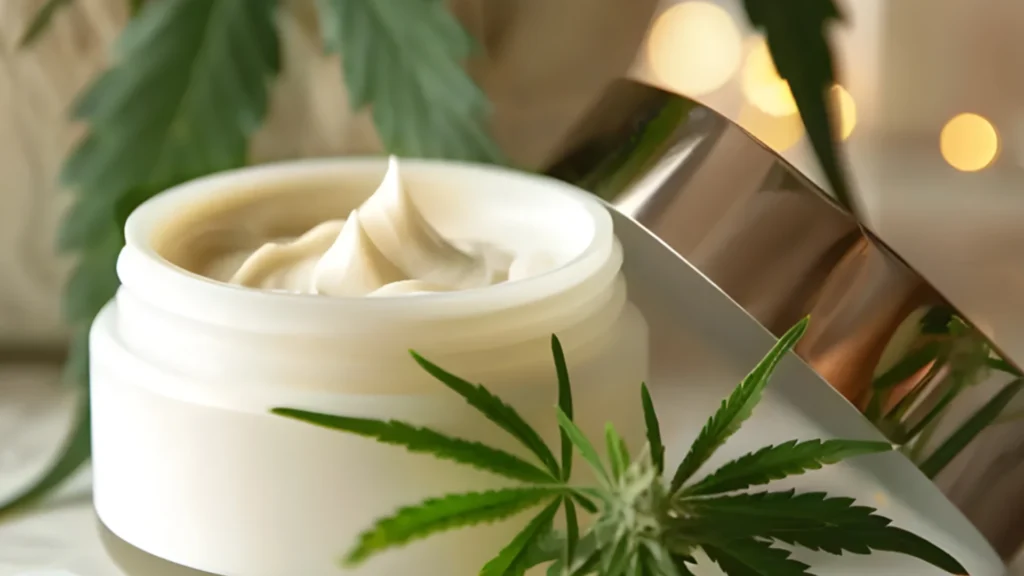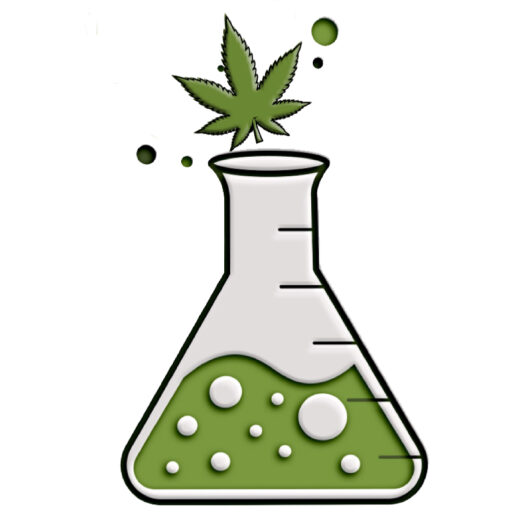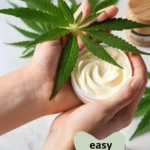Terpenes in cannabis are the unsung heroes, just like terpenes in aromatherapy, shaping flavours, aromas, and therapeutic effects. Explore how the ‘entourage effect’ in cannabis and homemade essential oil creams can enhance your experience with these potent compounds. Let’s dive into what terpenes do and why they matter!
Table of Contents
What Are Terpenes and Why Do They Matter?
Terpenes are a large group of organic compounds which are simple hydrocarbons. These compounds are produced by numerous plant and animal species. You will have already smelled or tasted numerous terpenes today just from the food you eat and smell.
Terpenes often have a strong smell that helps protect plants by deterring animals that might eat them. Other terpenes are designed to attract animals to eat them to spread the plant’s seeds. This strong mixture of smells is what gives cannabis plants the more common name of weed.
How Terpenes Shape Cannabis and Aromatherapy
Terpenes are used in aromatherapy and cannabis for a variety of purposes. Terpenes are crucial in cannabis, impacting the different effects of each strain and creating unique highs. Terpenes also contribute to a plant’s flavour and fragrance.
In aromatherapy, terpenes are the main component of essential oils and are certainly an important part of the fragrance. However, the most significant use for essential oils is for their therapeutic uses.
Terpenes in cannabis and aromatherapy contribute to therapeutic effects and can be combined for enhanced benefits. Rarely is a cannabis strain or an essential oil equally balanced with a range of terpenes. Usually, one terpene will be more dominant, and it helps to remember which one it is for future reference. If you had a negative experience with a specific strain or oil, you can avoid that terpene in the future.
This peer-reviewed article delves into terpenes as essential oil components and their synergy with cannabinoids.
The Entourage Effect: Terpenes and Cannabinoids Working Together
Cannabis terpenes give each strain its unique aroma, including fruity, skunky, spicy, or piney scents. They also have a therapeutic function known as the “entourage effect”. You know that a certain dose of THC can help with pain, anxiety, or stress, but it might also cause unwanted side effects.
The combination of terpenes in the weed can smooth that along and reduce those side effects. You could also add extra terpenes from essential oils so that a smaller weed THC dose is needed in the first place. This research shows terpenes enhance THC due to the entourage effect.
The list of terpenes in cannabis and essential oils is quite large, but there are many interesting crossovers. Using a cream with essential oils high in specific terpenes can boost the terpene content of your weed, whether you smoke, vape, or eat it. Or, you may want to use a different essential oil terpene to moderate the cannabis terpenes.

DIY Terpene-Infused Cream: A Simple Recipe
Here’s a simple cream formulation where you can easily add essential oils.
Ingredients:
- 88g Distilled Water
- 10g *Olivem 1000 Emulsifier (paid link) (this sometimes has different names)
- 1g *Saliguard PCG ((paid link) this sometimes has different names)
- 1g *Essential Oil of your choice
100g Total
Method:
- Weigh the boiling distilled water into a heatproof jug, and drop in the emulsifier. It will quickly melt.
- Stir with a silicone spatula for a few seconds.
- Use an immersion blender/stick blender in the jug and keep it at the bottom of the jug. Blend for 30 seconds.
- Leave to stand for 1 minute and then blend again for 30 seconds.
- Remove the blender and stir with the silicone spatula until the cream has cooled to below 40°C.
- When it has cooled down, stir in the Saliguard PCG and whichever essential oil you have chosen.
- Stir again, then jar and label.
Conclusion
Terpenes are those fragrant compounds that you often smell in essential oils and they’re popular in aromatherapy for their pleasant scents. On the other hand, cannabinoids are the chemicals found in cannabis that connect with receptors in our brain.
Together, terpenes and cannabinoids work to create different effects. Whether you’re vaping, rolling a spliff, or whipping up a terpene-infused cream, these compounds let you customise your experience. Experiment with them, find your favourites, and elevate your next session.
FAQ
What are the benefits of glycerin for skin?
Glycerin acts as a humectant, drawing moisture into the skin. This helps hydrate the outer layer, improves the skin barrier, and protects against irritants. It also helps with wound healing and relieves dry skin conditions.
How does glycerin benefit hair health?
Glycerin hydrates the hair shaft, making it softer, shinier, and more flexible. It also soothes the scalp, helps remove product build-up, and relieves dryness.
Can glycerin be applied directly to the face?
Pure glycerin should be diluted before applying to the face. Used straight, it may draw moisture from deeper skin layers, so it’s best mixed with water or floral hydrosols.
Is glycerin suitable for all hair types?
Glycerin works for most hair types, especially coarse or dry hair. However, those with freshly coloured hair should use caution, as glycerin can sometimes affect colour retention.
Are there any side effects of using glycerin on skin or hair?
Overusing glycerin, especially in dry environments, can cause skin dehydration as it pulls moisture from deeper layers. Always use it diluted and combined with other moisturisers.
Is plant-based glycerin vegan and halal?
Yes, plant-based glycerin made from sources like soy or coconut is both vegan and halal.

If you liked this blog post, I would love it if you shared it with a friend.
If you use Pinterest, please pin this post.
*As an Amazon Associate, I earn from qualifying purchases.
**As a POT by NOIDS affiliate, I earn from qualifying purchases.


